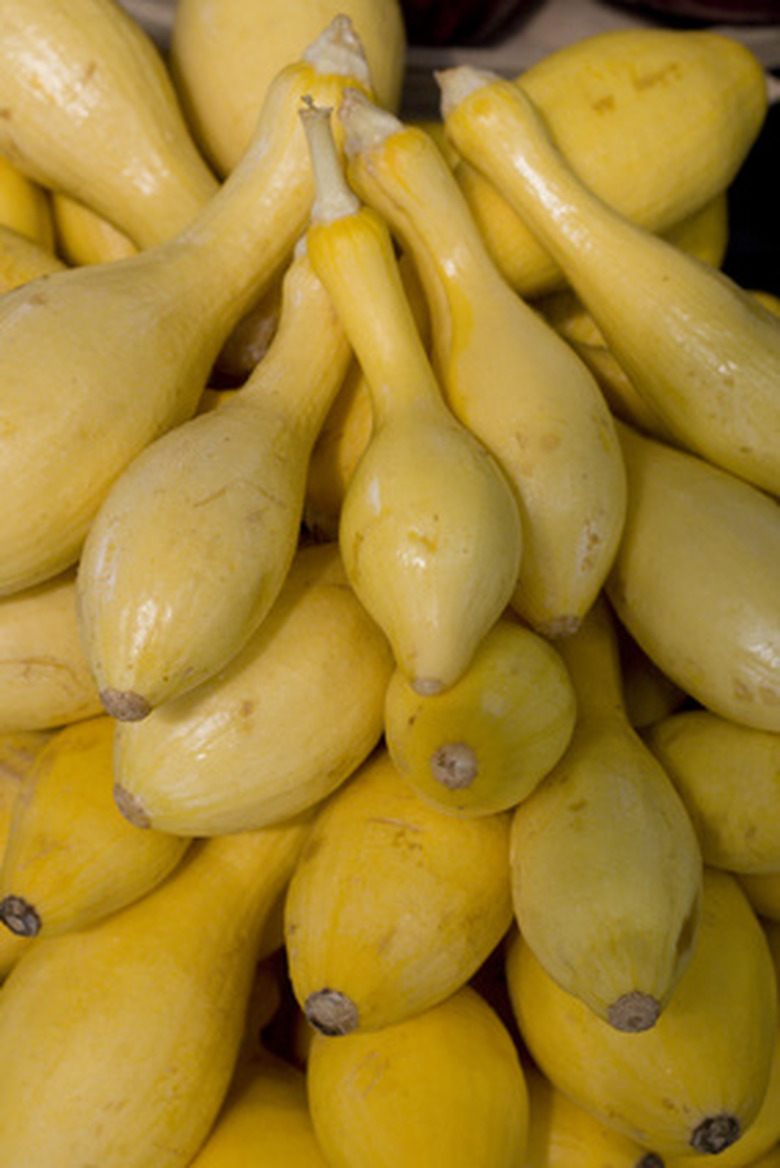Plant Identification & Squash
Squash plants make a big statement in the vegetable garden with their exuberant growth and robust vines. They also will self-sow if any fruits are left in the garden over the winter. Occasionally, squash volunteers may grow in unexpected locations if seeds were distributed there by animals. Squash varieties include summer squash, such as zucchini, yellow squash and patty pan squash, as well as winter squash, such as Hubbard, pumpkin and butternut.
Types
Summer squash grow on fairly upright plants and produce fruits mid to late summer. These fruits, including zucchini and yellow squash, have soft skins and flesh. They are sauteed, roasted or used in baked goods. Winter squash take a long time to ripen and have a hard outer rind with hard flesh. A cavity inside the fruit holds hundreds of seeds. Winter squash are used in soups, roasted or pureed for pies or spreads. They require a long cooking time to soften the flesh.
- Squash plants make a big statement in the vegetable garden with their exuberant growth and robust vines.
- Winter squash take a long time to ripen and have a hard outer rind with hard flesh.
Identification
Squash begin as a small stem with one rounded leaf. As the plant grows, more leaves emerge. The leaves are large (4 to 8 inches wide), dark green, with a rounded shape and cut edges. All squash spread through rambling vines, although summer squash have a more upright compact growth than winter squash, according to Iowa State University. The plant produces yellow or orange blossoms midsummer to early fall, followed by fruits. Summer squash develop quickly and can grow from 6 inches to 12 inches in a few days. They are best harvested while small. Winter squash grow and ripen slowly.
- Squash begin as a small stem with one rounded leaf.
- All squash spread through rambling vines, although summer squash have a more upright compact growth than winter squash, according to Iowa State University.
Time Frame
Squash are warm-season crops, meaning they sprout when soil temperatures are above 65 degrees F and the last frost has passed. They usually emerge in early summer and grow quickly. Squash are not cold hardy. Vines and leaves blacken and wither with the first frost.
Considerations
Squash, particularly winter squash and pumpkins, need a lot of space and can quickly take over the whole garden. They are best planted in their own space or given plenty of room to grow (at least 5 feet per plant). Summer squash produce prolifically, and one plant may provide as many as 20 large fruits. For most families, one or two plants is enough.
- Squash are warm-season crops, meaning they sprout when soil temperatures are above 65 degrees F and the last frost has passed.
- Summer squash produce prolifically, and one plant may provide as many as 20 large fruits.
Pests and Disease
Squash may be troubled by boring insects or disease. The most common disease is powdery mildew, which covers the leaves with a white powder. This disease rarely affects the fruits, although it looks alarming.
